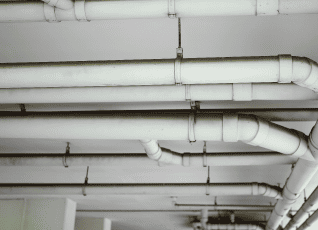An Examination of Dead Legs, Water Flow, and Legionella Growth

The relationship between stagnant sections in building water systems, known as dead legs, water flow conditions, and the risk of Legionella, a bacterium that causes Legionnaires’ disease, is more complex and multifaceted than commonly perceived. In this article, we explore these topics in-depth, using insights from scientific studies and valuable industry observations. Understanding dead legs Dead legs refer to the segments within pipes in a plumbing system where water flow is either significantly reduced or non-existent. These stagnant areas of plumbing can become a breeding ground for bacteria and other contaminants that can compromise water quality. The lack of flow hinders proper disinfection, provides favorable growth conditions, and accumulation of contaminants which can lead to health concerns. Water flow and Legionella growth Water flow plays a crucial role in the growth of Legionella bacteria. Liu’s 2006 study examined the impact of different flow conditions, such as turbulent, laminar, and stagnant, on Legionella growth. Interestingly, the research found that turbulent flow conditions promoted the most prolific growth of Legionella, while stagnant conditions, often associated with dead legs, showed the least growth. The study hypothesized that turbulent conditions increased oxygen and nutrient availability, leading to the proliferation of biofilm and Legionella. Additionally, Lehtola’s 2006 study revealed that flowing water supported bacterial growth more than stagnant conditions, contrary to common belief. Moreover, Sidari’s 2004 research challenged the widely held belief of a direct link between dead legs and Legionella, as the removal of dead legs did not result in a negative Legionella test. These findings highlight the intricate relationship between water flow and Legionella growth. Dead legs in plumbing and Legionella The presence or absence of dead legs is not a reliable predictor for Legionella. While dead legs can negatively impact water hygiene and quality, they may not directly promote Legionella colonization in building water systems. They may, however, indirectly contribute to Legionella growth and risk of disease occurrence. Stagnant water in dead legs can serve as a potential nutrient source and a refuge for Legionella under specific conditions. Dead legs can also create low water flow areas, decrease disinfectant levels, allow the tempering of water, and increase organic load and sediment accumulation which all may increase the likelihood of Legionella colonization. Due to pressure changes in water systems, dead legs may also contaminate or impact the entire water system. Therefore, while a dead leg alone may not reliably predict Legionella, they should still be considered a potential risk factor and addressed in water management strategies to minimize the risk of Legionella growth and transmission. Emphasizing comprehensive understanding There’s merit in maintaining high water hygiene and quality standards, however, a comprehensive understanding of the actual factors leading to Legionella growth is crucial. While a dead leg can be a contributor to Legionella growth, there are other factors such as water flow that could potentially impact Legionella growth, so it’s important to take a holistic approach and look at the entire building water system. References Liu 2006: Effect of flow regimes on the presence of Legionella within the biofilm of a model plumbing system Lehtola 2006: The effects of changing water flow velocity on the formation of biofilms and water quality in pilot distribution system consisting of copper or polyethylene pipes Sidari 2004: Keeping Legionella out of water systems